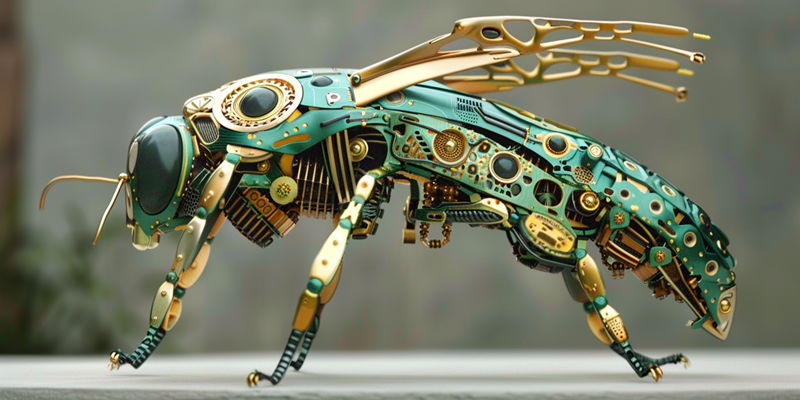Industrial automation leader Festo has revealed a series of innovations that marry the intricacies of biology with the precision of modern engineering at Hannover Messe 2024. The showcase included the BionicBee, a miniaturized autonomous drone for swarm applications, and the BionicHydrogenBattery, a novel approach to hydrogen storage that utilizes living organisms. This article dives into these groundbreaking technologies and their potential to reshape industrial processes.
The BionicBee: A Glimpse into the Future of Industrial Automation
Autonomous Micro-Drone Swarms
The BionicBee demonstrates Festo’s commitment to pushing the boundaries of industrial automation. These tiny aerial robots, small enough to fit in the palm of your hand, are not just marvels of miniaturization but also of coordination. With their 22 mm length and 24 mm wingspan, they open up new possibilities for intricate tasks like item tracking in warehouses or meticulous environmental assessments. Their generative design means less material waste, a nod to sustainability without sacrificing functionality.
Advanced Flight Control and Coordination
To operate without mishap, each BionicBee is equipped with an ultra-wideband indoor location system, which ensures they can navigate with precision and without collisions within their swarm. Coordinated by a central computer, these drones display impressive teamwork and adaptability. Following each mission, the BionicBees undergo delicate recalibration to correct any discrepancies, ensuring the swarm maintains its seamless collective behavior—a testament to Festo’s rigorous approach to automated excellence.
Sustainable Energy with the BionicHydrogenBattery
Bacteria-Based Hydrogen Storage
The BionicHydrogenBattery represents a significant leap forward for green energy storage. By leveraging the bacterium Thermoanaerobacter kivui, Festo has developed a method that circumvents the need for high-pressure storage systems. The revolutionary process of transforming hydrogen into formic acid and then reverting it for use holds numerous advantages, such as increased safety and efficiency. This bacteria-based technology is more than just an energy solution; it’s a blueprint for an environmentally conscious future.
A Closed-loop Energy System
A closer look at the BionicHydrogenBattery’s process reveals its ingenious design. From the initial production of hydrogen through electrolysis to the final generation of electricity via a fuel cell, the system reflects a self-sustaining loop reliant on basic chemistry and microbiology. This approach not only positions hydrogen as a central player in the alternative energy game but also has wide-reaching implications for other realms like additive manufacturing and metal treatment sectors.
Pneumatic Solutions and Workforce Development
Pushing the Envelope in Bioreactor Technology
Festo continues to make strides in bioreactor technology, key to the cultivation of essential microorganisms. Innovations such as the VTUX valve terminal are designed specifically for pneumatic control within these delicate systems, catering to the precise needs of algae and bacterial cultures. This focus on customized solutions cements Festo’s position as a forerunner in advancing bioreactor efficiency and capability.
Training the Next-Gen of Biomechatronics Experts
At Hannover Messe 2024, Festo demonstrated not only its technological mastery but also its vision for the future. By integrating advanced robotics with biological principles, the company is training the next generation of experts in biomechatronics—a field that is sure to be critical in the years to come. Their efforts in workforce development are as significant as their innovations, ensuring the industry’s continued growth and the emergence of professionals skilled in the complexities of this interdisciplinary domain.

